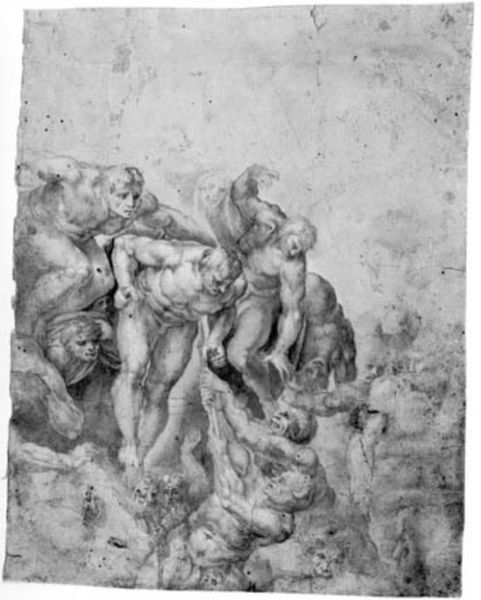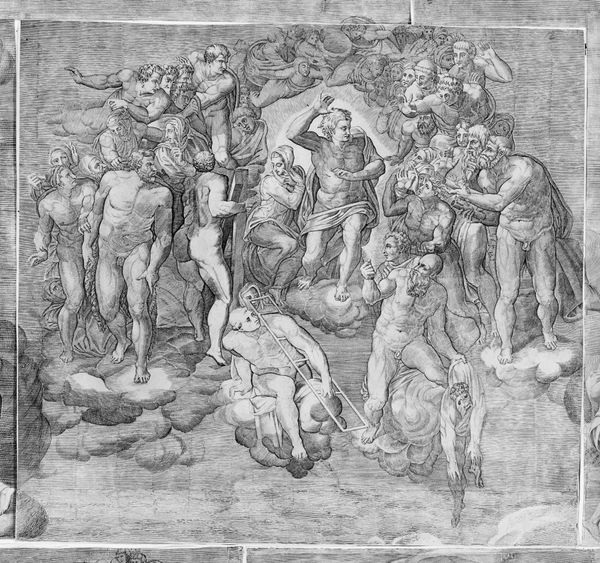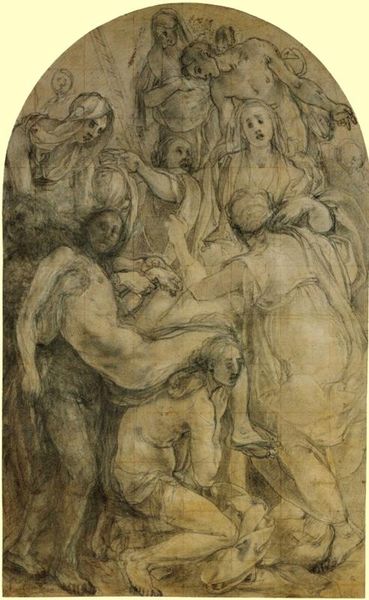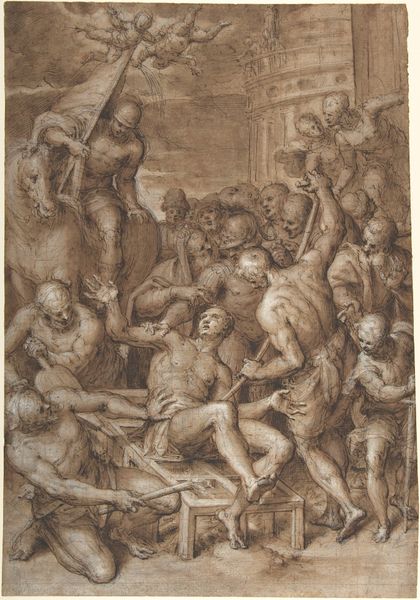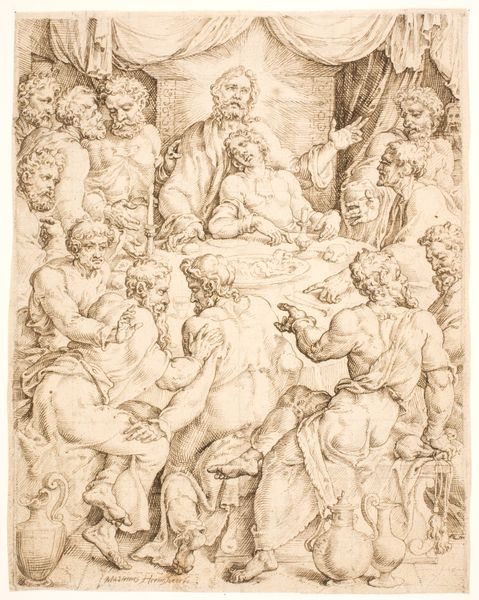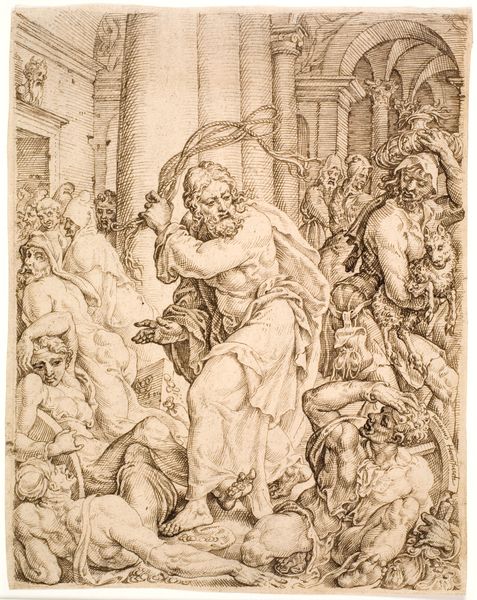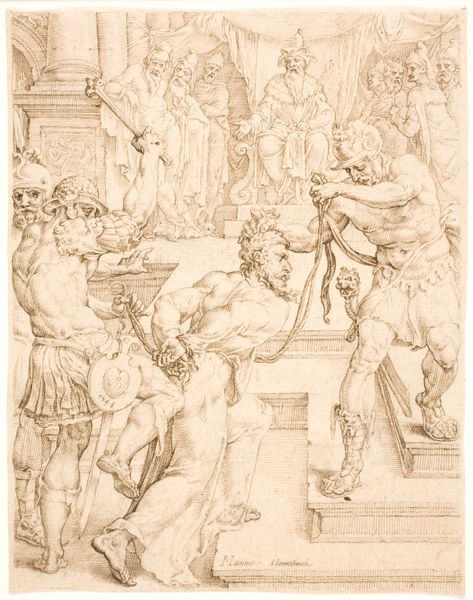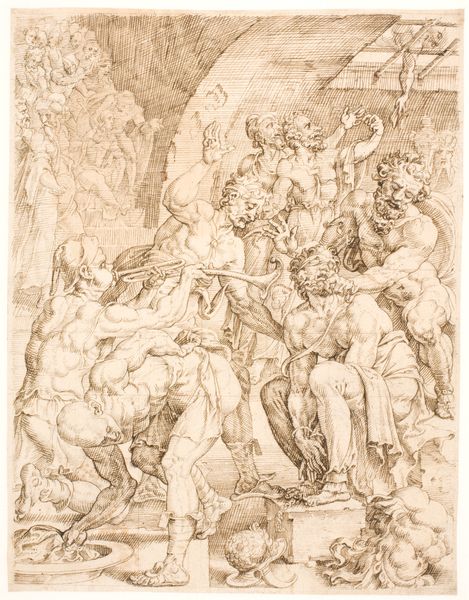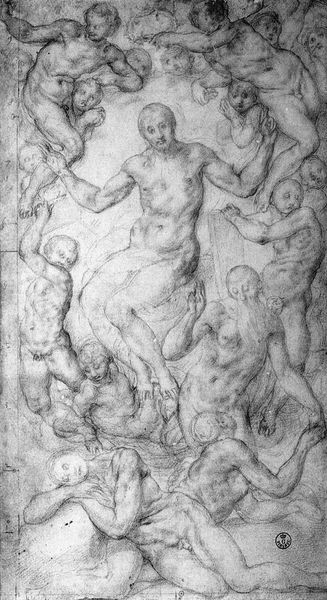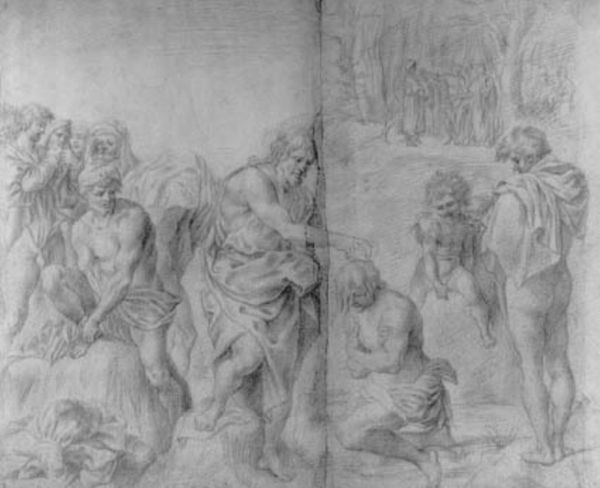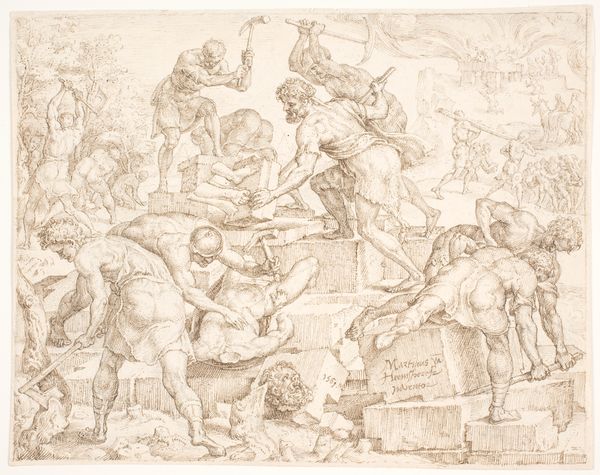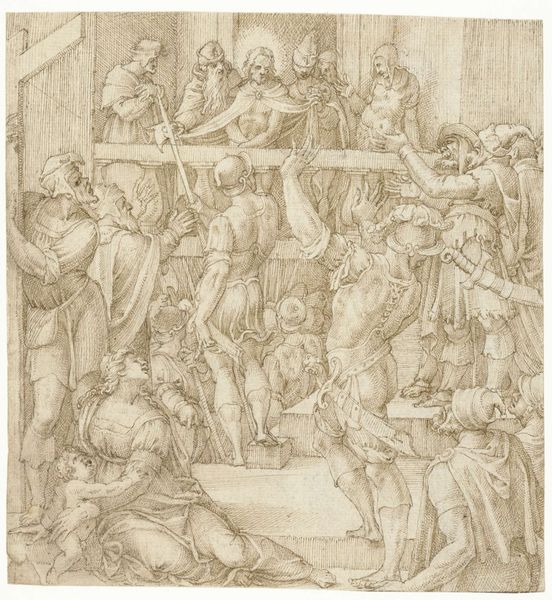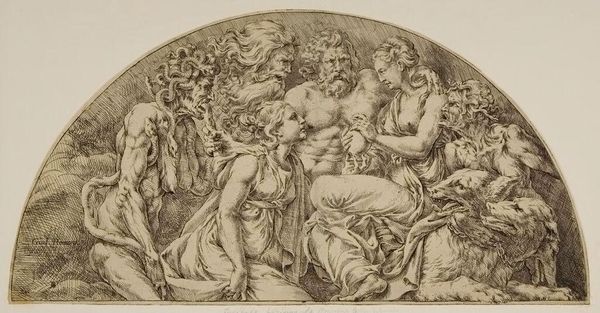
The so-called "Choir of Sibyls" and the Ecclasia group at the upper left of the Last Judgement, Sistine Chapel 1575 - 1625
0:00
0:00
drawing, charcoal
#
portrait
#
drawing
#
charcoal drawing
#
mannerism
#
11_renaissance
#
pencil drawing
#
charcoal
#
history-painting
#
charcoal
Dimensions: 373 mm (height) x 258 mm (width) (bladmaal)
Curator: Let’s consider this drawing titled “The so-called “Choir of Sibyls” and the Ecclesia group at the upper left of the Last Judgement, Sistine Chapel,” attributed to an anonymous artist and created sometime between 1575 and 1625. Editor: The density of figures really strikes me. They are writhing, ascending; it's a flurry of limbs and faces. There's something unsettling in the way the bodies seem to blend. Curator: Absolutely. The artist is clearly grappling with representing the weight of theological themes through a Mannerist lens, with elongated figures and dramatic poses serving to heighten the emotional and spiritual intensity of the composition. One may observe a definite gender and power dynamic throughout, given the hierarchical nature of this so-called choir of Sybils at the upper left. Editor: It's intriguing how the medium—charcoal, seemingly— lends itself to that blending effect. You can almost feel the artist working the charcoal, smudging and building form from shadow. The production itself mirrors the chaotic scene depicted. The image feels like labor—as if the artist were constructing from mere dust this ascending mass. Curator: Indeed. And the historical context, situated amidst the Counter-Reformation, lends further complexity. The artwork reflects anxieties about religious authority, heresy, and salvation. How the image reproduces existing stereotypes or prejudices needs careful attention, especially when concerning representation of Sibyls and female knowledge. Editor: You’re right. The materials really emphasize that tension. Charcoal is so fragile. Ephemeral, even. Yet, it’s used here to depict this momentous and decidedly *un*transient scene of Judgement. This reveals more than what may meet the eye initially. Curator: The portrayal, then, becomes a window onto the power structures that shaped the religious and artistic landscape of the time. Considering philosophical frameworks helps deconstruct the layers of symbolism within and understand how this image functioned within its socio-political framework. Editor: It is fascinating how artistic creation and material conditions create an echo to these religious undertones. The ethereal and divine were literally made with earthly materials and labor. It's grounding and humanizing in some sense. Curator: Understanding it now requires that we view it critically, through various contextual lenses that broaden appreciation. Editor: Exactly. It offers tangible proof about the complicated and fascinating world in which this drawing came into existence.
Comments
No comments
Be the first to comment and join the conversation on the ultimate creative platform.

